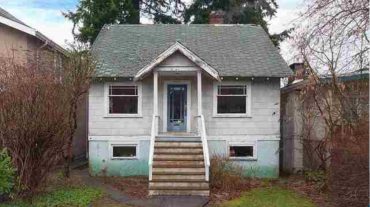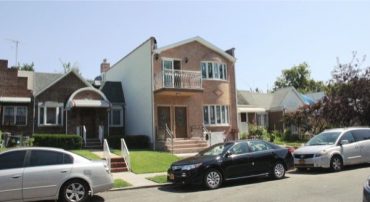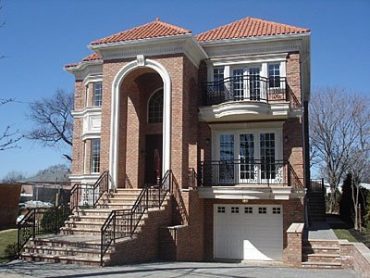
John Bleasby
McMansions and Monster Homes are poor investments: U.S. study
Canadian ContractorOver-sized homes are subject to scorn and ridicule, plus questionable economics
It’s understandable that purchasers of urban property want to maximize their lot size. Land is increasingly expensive in most Canadian cities. Tear-downs are common. Even a wreck commands a premium price if the location is favourable. Despite

This Vancouver single family lean-to sold for $2.4 million, and will be replaced with a massive infill home
the negative connotations implied by the name, ‘McMansions’, or ‘Monster Homes’, appear to be an ideal solution for urban infills; maximise the size of your new home on the lot you paid so much for. The question is: Does it make sense economically?
McMansion / Monster Home; what does it mean?
The terms McMansion and Monster Home mean different things to different people over time. In the late ‘90’s and early part of the 21st century the term popped up as a way to describe very large houses generally, say 5,000 square feet and up, built on fairly large lots. However, given the increase in average new house size, that parameter needs upward adjustment. Nevertheless, these homes are distinctive for their mish-mash of ostentatious unrelated architectural features such as classical columns that support nothing, enormous interior lobbies, and windows with little purpose, all meant to resemble something classy from the past, yet failing in all departments. It’s like putting a Big Mac on a silver plate and calling it filet mignon on a bun.

C’mon! Seriously??
In urban areas, we have Monster Homes, houses built to the limits of the lot lines and to maximum allowable height. They too can be quite ugly. However the main objection is their irrelevance to the neighborhood around them. Pity the poor home owner of a right-sized neighborhood home who must now look across the lot line at the blank, three story stucco wall of their new neighbour!
From a future value standpoint, McMansion = McFail
As tasteless and disrespectful as super-sizing can be, the question that needs to be considered by your client is this; ‘Do such huge houses make sense in terms of return on investment?’

Making a statement in the neighborhood. You can fill in the caption….
A recent study in the United States suggest they do not. Bloomberg News reports that although “McMansions cost more to build than your average starter ranch home does, and they will sell for more…..the return on investment has dropped like a stone” as measured by re-sale value premiums over the past few years. For example, while in some U.S. cities over-sized homes sold for a premium as high as 274% versus their neighborhood counterparts, today that premium has shrunk to as little as 190%. In other words, the return on investment has declined.
Shifts in typical new build home size impacts the value of over-sized homes
The study compiled by U.S. real estate agency Trulia referred to by Bloomberg News may be a guide and warning for clients seeking to build out-sized homes on urban infill lots.
But why is this happening? Bloomberg suggests that the increased average size of new homes may be the reason behind this apparent reduction in premium for over-sized homes. “One possibility is that builders have spent the last five years flooding housing markets with a new wave of large homes, bringing prices down. The median size of new homes dipped from 2007 through 2009, but then started climbing again—reaching a high of 2,488 square feet in the third quarter of last year. All those new, big homes may have watered down demand for older, big homes.” At the same time, the reduction in supply of more modest single family homes has led to an increase in value of these smaller homes, powered by the demand from first-time buyers with smaller budgets.
Size does matter, actually
The lesson to be learned is that when it comes to an infill, remodeled or new build house, bigger is not necessarily better in terms of value. Homes need to be in correct proportion to, and in character with, their neighborhoods.
And then there is the issue of ridicule and scorn from neighbours and passersby. Want a fun read? Go to this blog, and read some of the amusing reviews of McMansions…. and and while you’re at it, pick up some worthwhile tips that you can pass on to your clients when they approach you for a big rebuilding project.
follow John on Twitter @john_bleasby

Leave a Reply